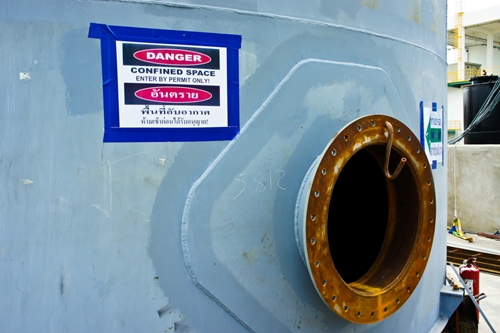
There are unique challenges oil and gas companies must face when it comes to working with hazardous chemicals. Gases like hydrogen sulfide naturally occur during extraction operations, which make it a common risk for workers in the field.
Working in an enclosed environment that may contain hydrogen sulfide combines two occupational safety hazards: confined spaces and hazardous gas exposure. With the risk of exposure to highly toxic gases like hydrogen sulfide, employers need to safeguard workers using gas detection equipment.
Here are reminders of the steps needed to ensure compliance regarding confined spaces:
Use gas detection
As part of the U.S. Occupational Safety and Health Administration’s rules, companies should monitor enclosed spaces for gases before allowing workers to step into these areas. Enclosed spaces can include tanks, silos and other places where it is difficult for employees to enter and exit. Employers could install gas detection machines to measure the level of air contaminants. Proper air monitoring is an OSHA requirement for confined spaces that need permits because of the potential presence of atmospheric hazards.
Companies could use single-gas monitors or multi-gas monitors to ensure hazardous gases are not present in enclosed spaces before oil and gas workers enter these confined areas. OSHA requires that employers perform continuous gas monitoring.
Be aware of the symptoms of gas exposure
Employees should recognize the symptoms of chemical exposure, such as when they encounter hydrogen sulfide gas. These signs may include coughing and shortness of breath in the case of low concentrations of exposure. Although hydrogen sulfide has a distinct smell, workers may not be able to immediately tell how much exposure there is without devices like gas detectors. Devices such as these should accurately measure and report the level of hazardous gas in the area.
Establish a line of communication
Another precaution employers should take is to make sure they have a colleague or manager outside the enclosed space. Having someone on the outside and maintaining a line of communication either through verbal commands, keeping personnel in their line of sight or using electronic devices could prepare them for any emergency or rescue services in case hazards are detected.
Use respirators
In the event employees are at risk for exposure to dangerous gases, employers should provide workers with personal protective equipment such as respirators that will prevent inhalation of gases and their negative health effects.








